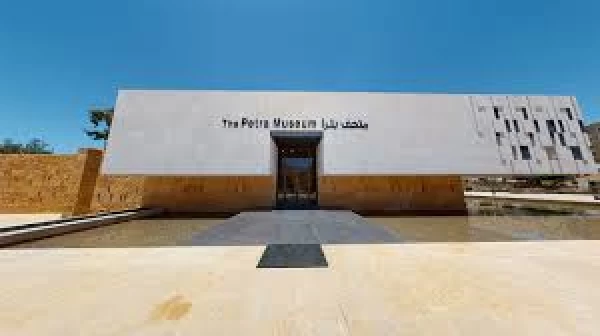
Petra Museum
Petra Museum
The capital of the Nabataean Arabs, the most famous historical city in Jordan, and one of the New Seven Wonders of the World, carved into the rock in the mountains, its discovery was delayed until the 19th century despite its historical importance and its transformation into one of the most important archaeological sites in the world.
Located in the heart of Jordan's southern desert, 262 kilometers south of the capital Amman, Petra is a city carved entirely out of pink rock, and includes many historical sites. It is naturally fortified and can only be entered through the “Siq” road, which is a narrow road, the sun's rays penetrate between its towering edges, and tourists and those heading to Petra travel on foot, or on the backs of animals or carts pulled by them.
The Petra Museum offers visitors insights into different aspects of the archaeological reserve that might not otherwise be visible. Here, the guests can go back in time from the Stone Age to modern day discovering the lost secrets of the ancient city and its inhabitants.
Petra Museum has good exhibits about the findings from Petra and its surroundings, including advanced technology with digital billboards, 3D videos and pictures, as well as the models of reconstructed objects, all utilising the latest archaeological research.
The Petra Museum is made up of 8 large spaces, called “Galleries”, and within these are interactive resources that help to understand the history of Petra and what is visible today (and what isn't) to the visitor's eyes. The 8 galleries are
- Gallery 1: Water Kaleidoscope
- Gallery 2: Petra Foundation
- Gallery 3: Nabatean activity
- Gallery 4: Zenith of the Nabataeans
- Gallery 5: Life of the Nabataeans
- Gallery 6: Nabataean forms of expression
- Gallery 7: The decline of Petra
- Gallery 8: The resurgence of Petra
It is evident from the way spaces are arranged that the galleries encompass every facet of the Nabataean culture that established this city around the sixth century B.C and, many years later, becoming influenced by Roman civilization without completely changing.
Of all the subjects covered, one of the most important is the use of water by the Nabataeans, which explains the functioning of the water canal that is still visible today in the Siq and which came from a natural spring in Wadi Musa, now identified as the place where the prophet Moses gave his rod to give his thirsty disciples something to drink, on his return from Egypt.
Of course, there are pieces of great historical and artistic value on display, recovered from Petra and displayed here with their appropriate explanatory panels. There are around 300 of them, and among the must-sees are The goddess of Hayyan (the best example of the beryl or aniconic symbol of this local goddess), the monumental bust of Dhu-Shara, the Nabataean mosaic in gallery 4, the sculpture of the man playing the double flute and the amphorae from Roman times.














